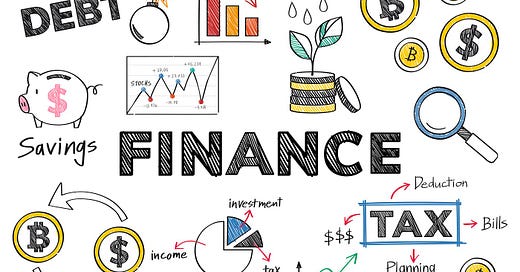Money. It's the one thing we all think we're experts on after two YouTube videos and a TED Talk. It’s like going to a party—everyone has advice…”I bought this xyz stock that went up 50% in 1 week” hmmmm…what about all the losses they made…nah!! (Also, everyone's cousin's friend totally got rich trading crypto last week, right?)
Unlike medicine, where you need a decade of schooling to even prescribe cough syrup, talking about money requires… well, nothing. No degrees, no licenses. Just vibes and a strong opinion. And that’s where the trouble starts.
The second problem? The jargons. Good Lord, the jargons. Bulls, bears, ETFs, CAGR, XIRR—half the time, it feels like we’re discussing some weird wildlife sanctuary or a new secret language (man that would be a fun thing to do!!)
But worry not, my friends. I’m here to translate, simplify, and sprinkle in a bit of humor so we can all have a healthier relationship with money. Over the next few weeks, I’ll share lessons from managing my own finances across 30 years (and living in 10 countries—yes, I collect visas like Pokémon cards).
Let’s kick things off with the baby steps: the five foundational concepts for financial balance.
Step 1: Know Thy Income
Salaried folks, you probably have this down—monthly paycheck, check. But have you accounted for interest or dividends? Freelancers and business owners, are you sure you’ve tracked all your income streams? Or is some of your money lost in a black hole of forgotten invoices?
Step 2: Expense Analysis: aka, Where Did All My Money Go?!
My mom has been tracking every single expense in a notebook for over 50 years. (I’m convinced we can sell these as historical artifacts someday…what else am I leaving behind as a legacy!!)
Now, if I asked you how much you spent last month—or last year—could you answer without sweating?
If the answer is “no,” start jotting it down. (No, mental math doesn’t count; we all know you’re underestimating.)
Step 3: Build That Safety Net (AKA Savings)
Savings are your personal superheroes. They swoop in when life throws its curveballs (looking at you, unexpected dental bill) or when you need cash for goals. But be honest
Are you saving intentionally, or just hoping there’s something left at the end of the month?
Step 4: Goals: The “Where Are We Going?” Question
Imagine I told you, “Pack your bags, we’re going on a trip!” Your immediate response would be, “Cool, but… where?”
Yet, with money, most people don’t ask this. What’s your destination? Retirement, a dream house, a kid’s education, or just the peace of knowing you won’t be broke? Get specific.
Your money should work for something, not just sit there looking pretty.
Step 5: Budgets: AKA Maps for Your Money
Speaking of trips, budgets are like your travel map. Whether it’s Google Maps today or those foldable AAA ones (remember those?), they guide you.
A budget tells you where to spend, where to save, and where to stop wasting.
Without one, you’re just wandering around Financial Lostville.
That’s your primer on the 5 foundational steps to personal finance. Over the next few weeks, we’ll dive into each one. But for now, think of this as learning to crawl before you run (financially, not literally).
Stay Curious, and we will tackle this together!











